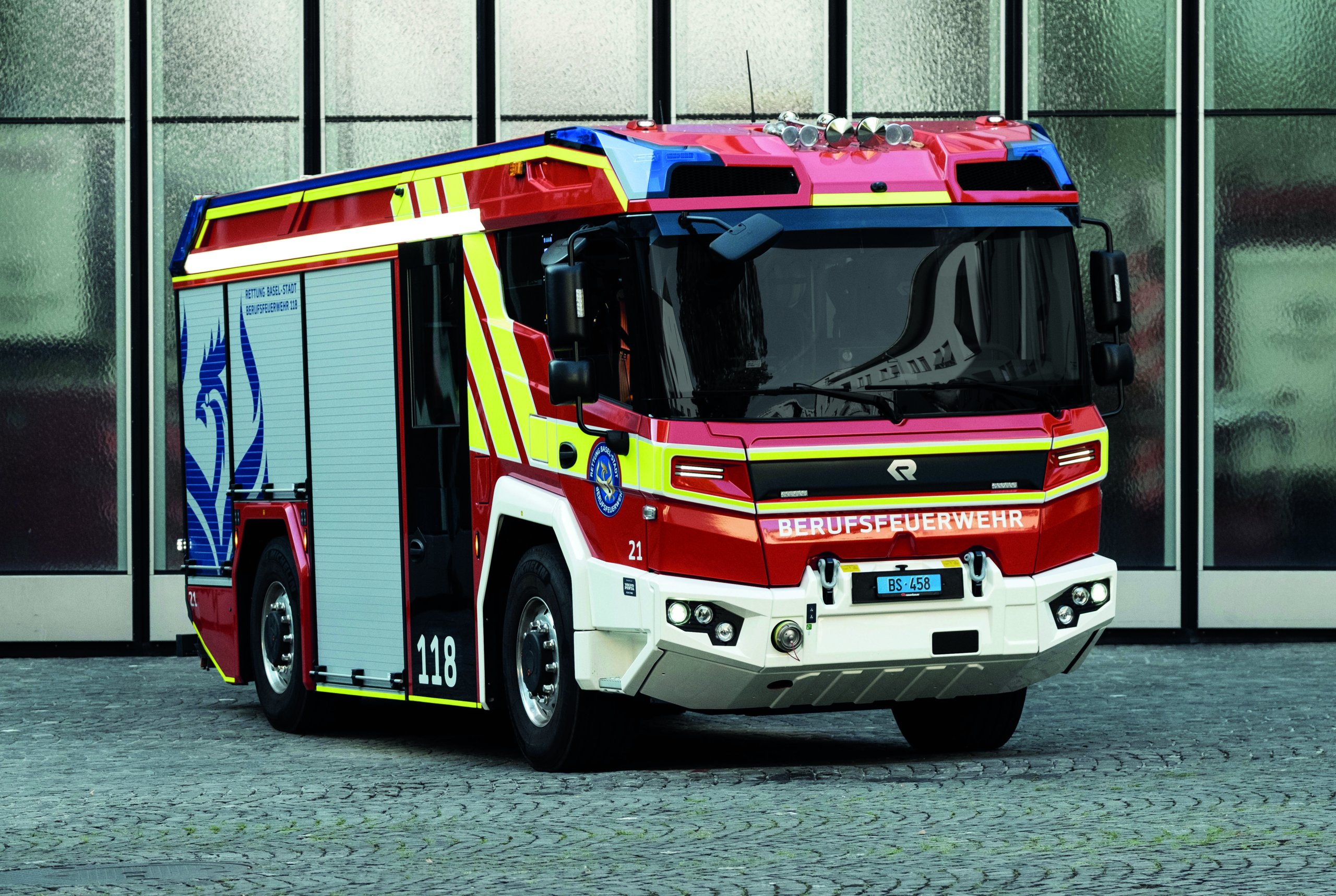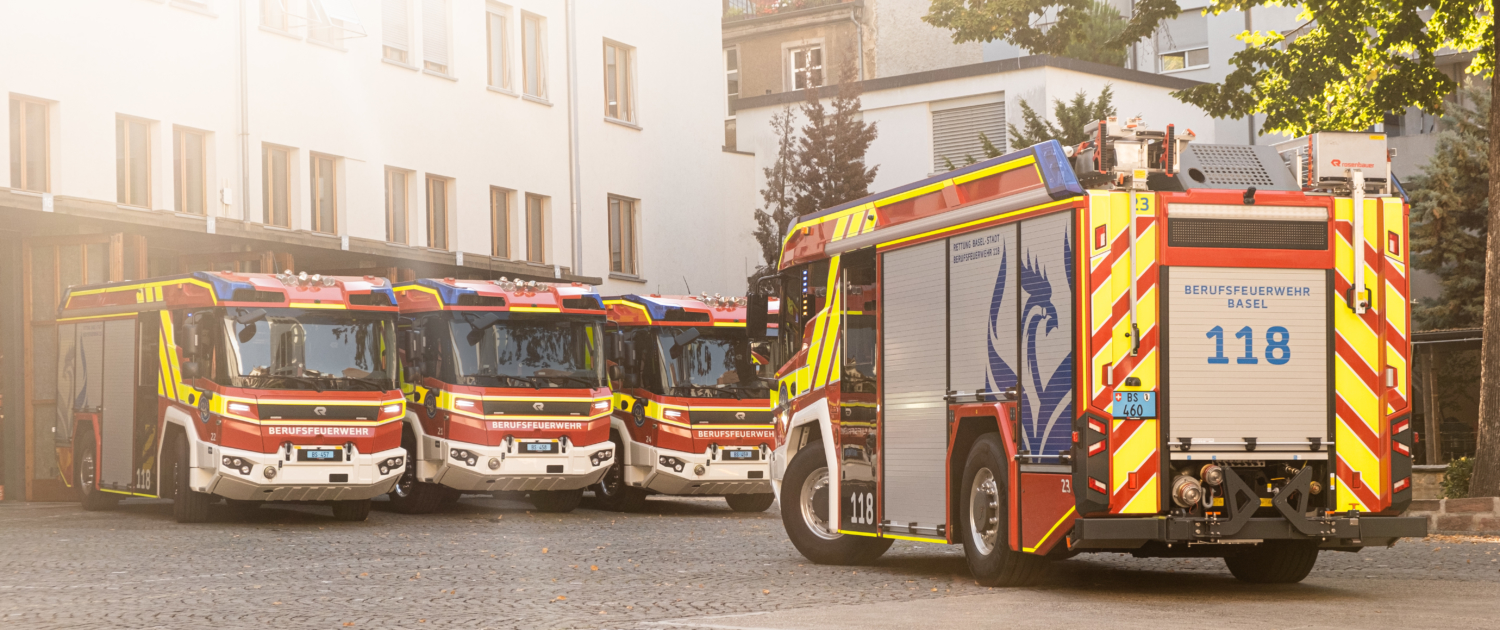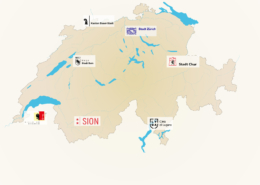Electricity to the scene - Basel fire department opts for electromobility
If a fire needs to be extinguished in Basel, a cat needs to be pulled from a tree or a motorist needs to be freed from a vehicle in a traffic accident, the Basel fire department will be deployed - and since fall 2023, it will do so more silently than before and with fewer CO2 emissions. The Basel professional fire department is switching to electromobility. Four fire engines, three command vehicles and nine transport vehicles with electric drives are already in use.
High speed with flashing blue lights, maneuverability, braking performance, full load: The electric fire department vehicles have to be able to do a lot. And if an alarm comes in, it has to be quick and, of course, the battery has to be full.
The vehicles take around four hours to charge. This raises questions about operational readiness. Ralf Koster, responsible for vehicle replacement at the Basel professional fire department, explains: "Our experience shows that a fire engine is deployed every six hours on average. So a charging time of four hours is not a major problem." The vehicles are charged at a wallbox at the fire station, but can also be charged at public charging stations.
Area of operation and range
With an area of around 30 km2, the Basel fire department's operational area is relatively small, so the distances are usually relatively short. Every year, the professional fire department responds to around 3,000 calls. "We can cover 95% of these operations with the electric vehicles," says Ralf Koster. Should the battery nevertheless reach a critical limit, a so-called "energy backup system" in the fire engines provides compensation. This system consists of a diesel-powered generator that recharges the battery in an emergency to ensure full operational readiness.
Technical details of the electric fire engines
The electric fire engine is equipped with two batteries that supply a total of 132 kilowatt hours of energy. This gives the vehicles a range of around 100 kilometers. The batteries also supply the energy for pumps and other equipment at the scene. The purchase price of an electric firefighting vehicle is around one million Swiss francs, which is around 20 percent higher than the price of a conventional diesel vehicle (around 800,000 Swiss francs).
Vehicles and benefits in use

The new fire engine with electric drive has a lower entrance. Image: Basel professional fire department
As a rule, the fire department deploys three vehicles: A command vehicle, a fire engine and a turntable ladder. Two of these three vehicles are already equipped with electric drives. "The feedback from the emergency services about the new fleet is overwhelmingly positive," says Ralf Koster. Although driving is faster and different thanks to the electric drive, the firefighters have quickly become accustomed to the change in driving behavior.
One advantage of the electric vehicles is the lower entrance to the passenger compartment. In the previous diesel vehicles, the entry height was 1.40 meters over several steps. With the electric vehicles, the entry height is now two steps of 30 and 20 centimetres. "This makes it easier to get into the vehicle, especially for emergency crews with heavy breathing apparatus," says Koster.
Another advantage is the narrower design of the fire engines. This is a significant improvement in the narrow streets of Basel. In addition, the quieter operation of the electric vehicles significantly reduces the noise level during operations. "This makes communication and coordination within the team much easier."
Pioneering role
With the switch to electromobility, the Basel professional fire department is playing a pioneering role in Switzerland. In addition to the seven electric vehicles already in use, nine more vehicles with electric drives were put into operation in December 2024. Basel thus joins the list of international cities where the fire department has also opted for electromobility, including Los Angeles and Berlin.
Basel's climate strategy
The canton of Basel-Stadt aims to be climate-neutral by 2030. The canton has set this out in its climate strategy. Among other things, this includes switching to zero-emission vehicles in state-owned companies and state-related institutions - including the fire department.
The new emergency vehicles must meet a number of requirements in order to meet the demands of the fire department. This also applies to electric vehicles. These include excellent manoeuvrability, optimized braking performance and the ability to work effectively with a full load. It is also particularly important that the vehicles can be deployed quickly at any time and that the battery charge level is always sufficient.
Brigitte Mader, Communications, Swiss Federal Office of Energy
Image: Basel fire department
 Berufsfeuerwehr Basel
Berufsfeuerwehr Basel

 AET“Il Ticino continua a svolgere un ruolo importante”
AET“Il Ticino continua a svolgere un ruolo importante”  Swisstopo - GeoinformationNeue Studie: Das Grundwasser zu energetischen Zwecken optimal nutzen
Swisstopo - GeoinformationNeue Studie: Das Grundwasser zu energetischen Zwecken optimal nutzen  Was Sie über E-Auto-Batterien wissen müssen
Was Sie über E-Auto-Batterien wissen müssen  BFEWo stehen die Städte punkto Energietransition? (1. Teil)
BFEWo stehen die Städte punkto Energietransition? (1. Teil) 
 shutterstock
shutterstock Shutterstock
Shutterstock
Neuste Kommentare